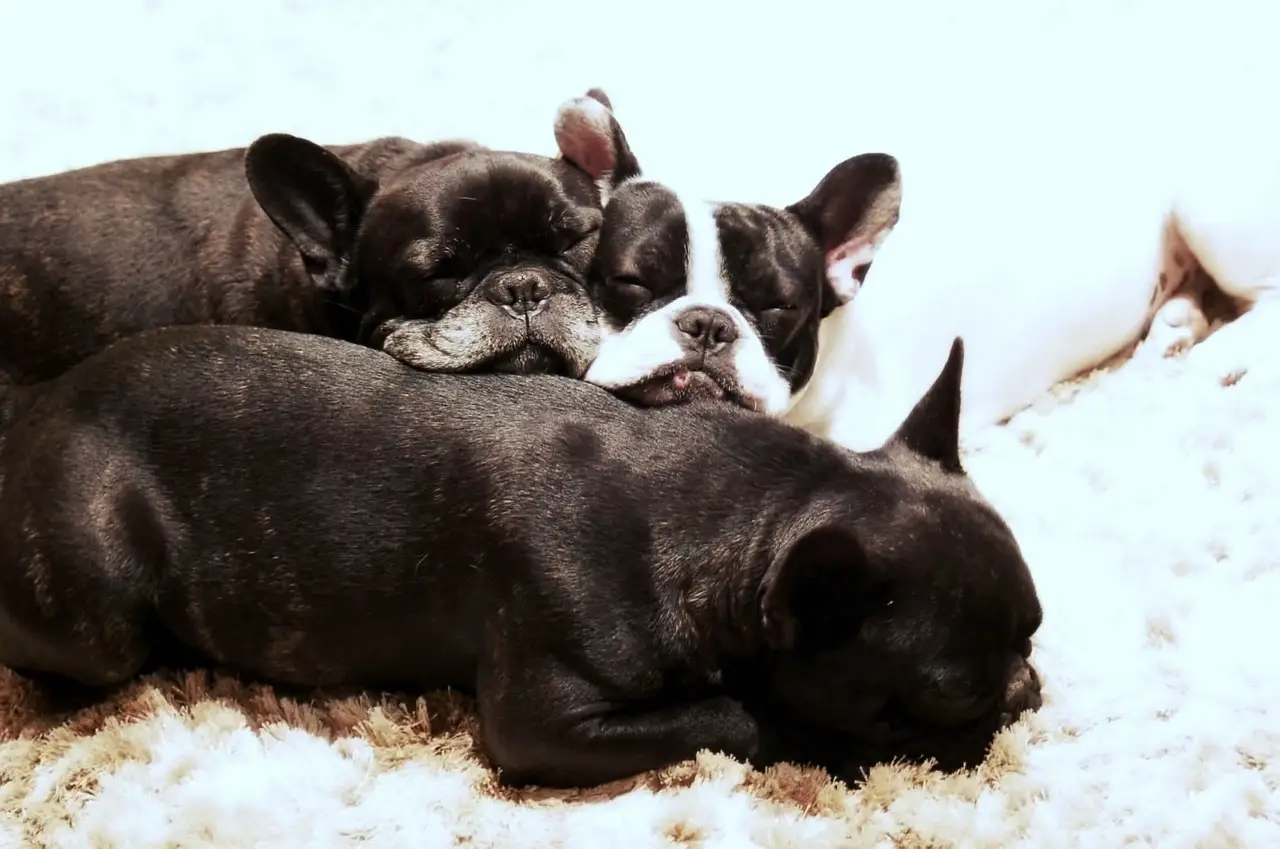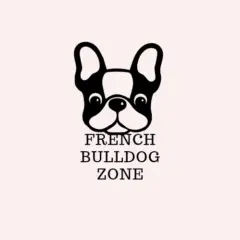

French Bulldogs are beloved pets known for their distinctive appearance and charming personalities. One of the fascinating aspects of French Bulldogs is the wide variety of colours they can come in. From classic shades to rare and exotic hues, French Bulldog colours add to their allure. In this comprehensive guide, we will explore the world of French Bulldog colours, understanding the genetics behind them, and discussing the different shades you may encounter when choosing your furry companion.
Understanding the Genetics Behind French Bulldog Colours
To truly appreciate the array of French Bulldog colours, it is essential to understand the genetic factors at play. French Bulldogs have a specific set of genes that determine their coat colour and pattern. The primary gene responsible for coat colour is the melanocortin 1 receptor (MC1R) gene. This gene controls the production of eumelanin and pheomelanin, which are pigments that determine the intensity and tone of the coat colour.
The MC1R gene has different variations, or alleles, that can result in various coat colours. These alleles can be inherited from the parents and passed down through generations. It is important to note that certain colours, such as blue and chocolate, are the result of a dilution gene. This dilution gene affects the intensity of the coat colour and can lead to unique shades in French Bulldogs.
Common French Bulldog Colours
French Bulldogs come in a range of common colours that are widely recognized and sought after by enthusiasts. Let’s explore some of these popular colours below:
Fawn
Fawn is one of the most common French Bulldog colours. It is characterized by a light tan or beige coat with a black mask on the face. Fawn French Bulldogs can vary in shade, from a pale cream to a deeper caramel tone. This colour is highly desirable and often associated with the classic French Bulldog look.
Brindle
Brindle is another popular colour seen in French Bulldogs. It features a base coat of fawn or another lighter colour with dark stripes or patches overlaid. Brindle patterns can vary greatly, ranging from fine and subtle striping to bold and pronounced markings. Brindle French Bulldogs have a unique and striking appearance that sets them apart.
Pied
Pied French Bulldogs have a predominantly white coat with patches of another colour, such as brindle, fawn, or black. The patches can be of various sizes and shapes, creating a visually pleasing contrast. Pied French Bulldogs are known for their distinctive markings, which can be asymmetrical and charmingly irregular.
Rare and Exotic French Bulldog Colours
In addition to the common colours, French Bulldogs can also sport rare and exotic colours that make them truly one-of-a-kind. These colours often result from specific genetic combinations and are highly sought after by enthusiasts. Let’s explore some of these rare and exotic French Bulldog colours:
Blue
Blue French Bulldogs have a coat that appears bluish-gray or slate in colour. This unique shade is the result of the dilution gene affecting the black pigments in the coat. Blue French Bulldogs are often in high demand due to their striking appearance and rarity.
Lilac
Lilac French Bulldogs have a coat that can range from a pale lavender to a softer grayish-purple shade. Like the blue colour, lilac is a result of the dilution gene acting on the black pigments. Lilac French Bulldogs are considered extremely rare and are often associated with a sense of elegance and charm.
Chocolate
Chocolate French Bulldogs have a rich, brown coat that resembles the color of chocolate. This colour is also a result of the dilution gene, which affects the black pigments in the coat. Chocolate French Bulldogs are highly sought after by those looking for a unique and luxurious colour.
How to Identify French Bulldog Colours
Identifying the colours of French Bulldogs can be an exciting and rewarding experience. By familiarizing yourself with the different coat colours and patterns, you can accurately determine the colour of a French Bulldog. Here are some key factors to consider when identifying French Bulldog colours:
Coat Colour
The base colour of the coat is the primary factor in identifying a French Bulldog’s colour. Whether it is fawn, brindle, or any other shade, examining the overall coat colour is the first step.
Mask Colour
The mask colour refers to the darker pigmentation on the face of a French Bulldog. It can help further identify the specific colour variation. For example, a fawn French Bulldog will have a black mask, while a blue French Bulldog will have a blue mask.
Markings or Patches
The presence of markings or patches on the coat can also provide valuable clues about the colour. Whether it is a pied pattern or specific brindle markings, these characteristics contribute to the overall colour identification.
Taking all these factors into consideration can help you confidently identify the colour of a French Bulldog and appreciate the unique beauty they possess.
Factors to Consider When Choosing a French Bulldog Based on Colour
While the colour of a French Bulldog may be aesthetically pleasing, it is important to consider other factors when choosing your furry companion. Colour should not be the sole determining factor in your decision. Here are some essential considerations when selecting a French Bulldog:
Health and Temperament
The health and temperament of a French Bulldog should always be a top priority. Regardless of the colour, ensure that the breeder or seller provides health clearances and information about the dog’s temperament. A healthy and well-tempered French Bulldog will bring you joy and companionship for years to come.
Breeder Reputation
Working with a reputable breeder is crucial when acquiring a French Bulldog. A responsible breeder will prioritize the health and well-being of their dogs, and they will have a deep understanding of genetics and breeding practices. Research breeders thoroughly and ask for references before making a decision.
Lifestyle Compatibility
Consider your lifestyle and how it aligns with the needs of a French Bulldog. French Bulldogs can have specific care requirements, and their energy levels may vary. Ensure that you are prepared to provide the necessary care, attention, and exercise for your chosen French Bulldog, regardless of its colour.
Remember, while colour can be a delightful characteristic, it should not overshadow the importance of health, temperament, and compatibility when choosing a French Bulldog.
French Bulldog Colour Health Concerns
While French Bulldog colours contribute to their unique appearance, certain colours may be associated with specific health concerns. It is crucial to be aware of these potential issues when considering a French Bulldog. Here are some common health concerns related to specific coat colours:
Blue French Bulldogs and Coat Color Dilution Alopecia
Blue French Bulldogs are prone to a condition called Coat Color Dilution Alopecia (CCDA). This condition can result in hair loss, skin problems, and increased susceptibility to infections. It is essential to work with a knowledgeable breeder who can provide information about the health history of blue French Bulldogs.
Merle French Bulldogs and Eye and Ear Abnormalities
Merle is a colour pattern seen in French Bulldogs that is associated with potential eye and ear abnormalities. These abnormalities can range from mild to severe and may require specialized care and attention. It is crucial to consult with a veterinarian experienced in dealing with merle French Bulldogs to ensure the best possible care for your pet.
Understanding the potential health concerns associated with specific colours can help you make an informed decision and provide the necessary care for your French Bulldog.
French Bulldog Colour Changes Throughout Their Lifetime
French Bulldogs, like many dog breeds, can experience changes in their coat colours throughout their lifetime. It is important to be aware of these changes, as they can affect the appearance of your French Bulldog. Here are some common colour changes you may observe:
Puppy Coat to Adult Coat
French Bulldog puppies often have a different coat colour than their adult counterparts. It is not uncommon for a puppy to have a lighter or more diluted coat colour, which may darken or change as they mature. The transition from puppy coat to adult coat can result in a different appearance.
Fading
Certain French Bulldog colours, such as fawn and brindle, may experience fading as the dog ages. This fading can cause the coat to become lighter or lose some of its vibrancy. While this is a natural occurrence, it is important to note that excessive fading may be a sign of underlying health issues and should be monitored.
Graying
As French Bulldogs age, they may develop gray hairs in their coat. This graying is a normal part of the aging process and can add a distinguished and mature look to your French Bulldog. Embrace the gray and cherish the wisdom that comes with age.
Understanding the potential colour changes that French Bulldogs can undergo throughout their lifetime allows you to appreciate the unique beauty and individuality of each dog.
French Bulldog Colour Controversies
The world of French Bulldog colours is not without controversies. Certain colours have sparked debates and discussions within the French Bulldog community. It is important to be aware of these controversies and consider different perspectives. Here are some notable French Bulldog colour controversies:
Rare Colours and Ethical Breeding
The breeding of rare and exotic French Bulldog colours has raised ethical concerns within the community. Some argue that the focus on producing these colours can lead to health issues and compromise the welfare of the breed. It is essential to support responsible breeders who prioritize the overall health and well-being of the dogs.
Color Discrimination in Show Rings
In some show rings, certain French Bulldog colours may face discrimination or be disqualified from competitions. This controversy stems from breed standards and preferences. It is crucial to remember that colour does not define the quality or character of a French Bulldog, and all dogs should be judged on their individual merits.
By understanding and discussing these controversies, we can work towards a more informed and compassionate approach to French Bulldog colours.
Conclusion
French Bulldog colours add a fascinating dimension to an already captivating breed. From the classic fawn and brindle to the rare and exotic blues and lilacs, French Bulldogs exhibit a wide range of colours that appeal to dog lovers worldwide. Understanding the genetics behind these colours, identifying them accurately, and considering other essential factors when choosing a French Bulldog will ensure a rewarding and fulfilling companionship. As we navigate the world of French Bulldog colours, let’s appreciate the beauty and individuality that each shade brings to these beloved dogs.

